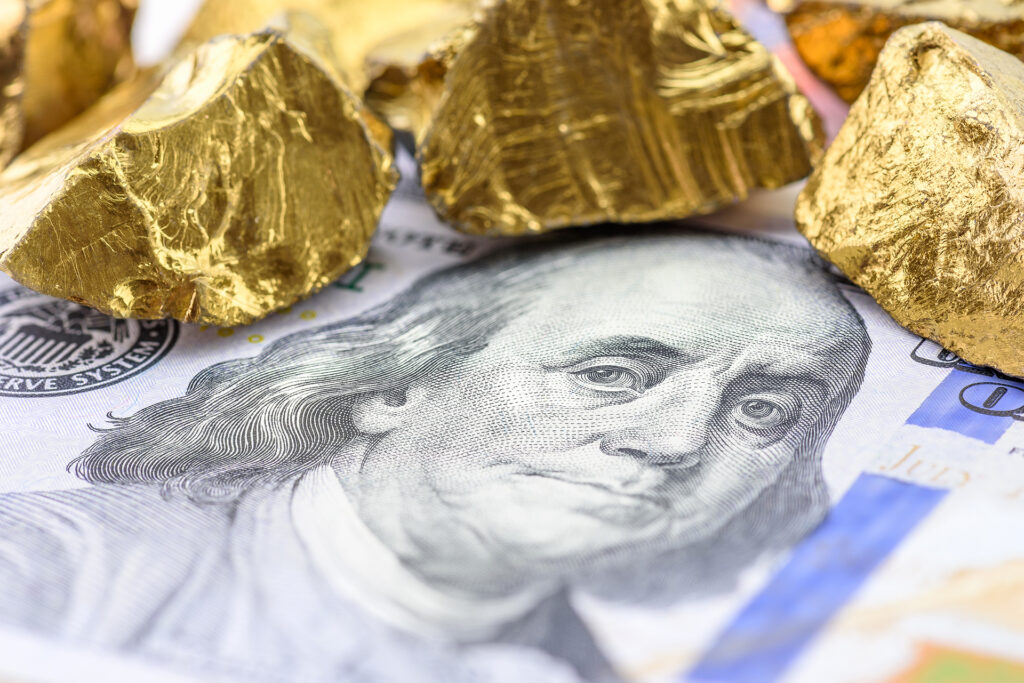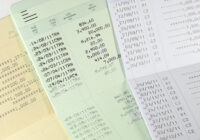In 2022, according to the World Gold Council, central banks bought 1,136 tonnes of gold, the largest purchase by weight on record. At an average price of $1,875 per ounce of gold, last year, central banks spent a grand total of $66 billion. Considering the steady decline in the purchase of gold throughout the decades, the sudden interest in this precious metal is puzzling and warrants a deeper analysis.
A previous article by Fair Observer, “Is The Gold Standard Alive or Dead,” came to the conclusion that a gold standard would be unworkable due to its deflationary bias. Deflationary bias in terms of gold represents large disadvantages. For example, if a nation backs its currency with the stock of gold, it is faced with the following problem: the above-ground stock of gold is around 200,000 tonnes, while mining produces only about 3,500 tonnes per year. This means that the stock of gold increases by only 1.75% a year. That low growth rate directly dictates the rate at which the money supply in that economy can grow. This would simply not be enough to accommodate population growth and productivity, resulting in a decline in the overall prices of goods and services. So why are central banks, who are surely aware of these limitations to the gold standard, frantically accumulating gold?
A survey by the 2022 Gold Reserves studied 56 central banks, and provided very interesting insights. When asked which topics they considered relevant for “reserve management decisions”, respondents named “low / negative interest rates” as the number one item (chosen by 91% of respondents), followed by inflation (88%) and geopolitical instability (84%). The fact that “low / negative interest rates” was ranked so highly as an influencer of monetary policy is somewhat ironic, since interest rates are typically controlled by central banks themselves.
The same could be said about inflation, although many experts attribute the 2022 inflationary surge to the unprecedented fiscal stimuli alloted in response to COVID-19, as well as the persisting supply chain bottlenecks that occurred when countries went into lockdown. When analyzing the survey results concerning factors relevant to the decision of whether or not to hold gold, two common answers by central banks raise eyebrows: (1) “anticipation of changes in the international monetary system” (which 20% of respondents deemed “somewhat relevant”), and (2) as “part of de-dollarization policy” (which 9% of respondents deemed “somewhat relevant”). While these statistics may seem negligible, their responses are actually quite revolutionary.
These insights most likely came from central banks in developing countries, and are an expression of concern regarding the stability of our current international monetary system, which is currently dominated by the US dollar. The severe economic sanctions placed on Russia in response to its invasion of Ukraine have rendered its dollar reserves useless, a fact which has not gone unnoticed by other countries. As a result, many developing countries are now questioning the continued use of US dollars as reserves.
When asked about the reasons for increasing their gold reserves, 39% stated that they did so “as a buffer against balance of payment crises”, while 34% (up from 13% in 2021) claimed their increases in gold serve as a “backstop for the domestic financial system”.
A balance of payment crisis is a common occurrence in developing nations, when import costs, to be paid in dollars, exceed the value of export profits over an extended period of time, leading to an overall shortage of dollars.
But can gold really be used as a “backstop for the domestic financial system”?
Can gold really jumpstart the economy?
In case of a breakdown of the international monetary system, the primary concern of most governments will be to prevent the collapse of the domestic banking system, as it would lead to widespread economic depression and civil unrest. Commercial banks will be largely insolvent if this occurs, due to devastating credit losses. Central banks would have to extend fresh loans to reliquefy commercial banks, which they could potentially accomplish with gold reserves.
But is there enough gold to back all currency? The answer is surprisingly simple; yes, there is technically always enough gold – it just depends on the price. However, it also depends on what is defined as “money”.
For example, the current outstanding value of US currency (dollar bills and coins) is about $2.3 trillion. The US government also owns 261.4 million ounces of gold. At the current price of $1,875 per ounce, US gold reserves are worth approximately $490 billion. In order to back all outstanding currency with gold reserves, the price of gold would have to reach $8,800 per ounce, roughly five times higher than it is today.
If gold were to cover all money created by the Federal Reserve (which is equal to its current liability of $8.4 trillion) the price of gold would have to be upwards of $32,000 per ounce (nearly eighteen times the current price of gold).
If you add to that sum the $17.7 trillion in US bank deposits, the correlating price of gold required would come close to $100,000 per ounce, a practically inconceivable amount compared to today. Furthermore, the widest measure of money in the US, total credit market debt outstanding, has accrued a hefty $92 trillion, which would require a gold price of more than $350,000 per ounce to be fully insured.
The Reality of Bank Deposits
A bank deposit is a digital token. You cannot take it home. Traditional bank deposits are not issued by a central bank – they are conducted by commercial banks. The moment you walk into a bank and deposit cash, you exchange a central bank’s liability against the liability of a commercial bank. Your counterparty has changed, unbeknown to most.
Bank deposits cannot, in aggregate, be converted into central bank-issued currency, since, as we saw above, the amount of bank deposits ($17.7 trillion) exceeds the amount of available currency ($2.3 trillion) by a factor of eight.
Bank deposits are supposed to match central bank-issued money one-to-one, but with certain limits. In the US, bank deposits are “insured” by the Federal Deposit Insurance Corporation (FDIC) for up to $250,000 per account. According to the FDIC’s 2021 annual report, the Deposit Insurance Fund (DIF) had assets of $124 billion, or 0.7% of all US bank deposits, a mere drop in the ocean of the $17.7 trillion that Americans have deposited into commercial banks – deposits they will eventually want back. Most people think of bank deposits as “money”, when in fact, they are nothing but stablecoin (with a very questionable stabilization mechanism).
Central Banks and the Potential of Digital Currency
A functioning monetary system is crucial for any society, so central banks have contingency plans for all kinds of calamities. Bundesbank, the German central bank, had hidden an entire set of alternate bank notes worth 15 billion deutsche mark (approximately $7.5 billion) in the basement of a house camouflaged as a residential villa in the suburbs of Frankfurt. Bank notes with a new design were ready to be exchanged overnight in case the existing ones had been rendered unusable. The list of potential threats included poisoning, nuclear contamination or attempts to derail the economy by mass introduction of counterfeit bank notes.
According to the CBDC tracker, a website which monitors the status of Central Bank Digital Currency (CBDC) projects across the globe, all major central banks are either in the beginning stages of research or piloting for the introduction of a retail CBDC. The advantages of a retail CBDC for the average user are not immediately clear, but become more evident with further research.
Most of what we call “money” is digital already. Instant settlement options are being offered by private sector companies (such as Venmo, Zelle, and Cash App), which offer currency for users to trade and distribute that is not backed by a central bank. The massive popularity of these apps have effectively cut time and costs of cross-border transactions across the globe.
However, a retail CBDC would have one major advantage: being able to offer central bank-issued money directly to users. Currently, the only way for citizens to get access to central bank-issued money is by obtaining cash via a commercial bank. Having a CBDC would allow central banks in crisis to credit users with new currency, enabling them to bypass commercial banks completely.
However, for this method to be effective, users would need to establish digital wallets and be comfortable using them. The introduction of CBDC has the potential to resolve many monetary inconveniences. Central banks with gold reserves would be able to offer both partial or full gold-backing for their digital currency. However, countries lacking in gold would not be able to participate in a gold-backed monetary system, and may have to back their currencies with other items, such as government-owned land or the rights to raw materials to be mined in the future.
While unprecedented, combining a 5,000-year store of value (gold) with modern technology (digital currency) could turn out to be just the tool the world needs to reset its monetary system. Once confidence in the novel CBDC system has been established, gold backing could be gradually removed, and the cycle of credit-based monetary expansion could begin anew.
Gold is the anathema to a fiat-based monetary system. Record gold purchases by central banks are a red flag regarding the stability of our current monetary system. When central banks embrace gold, it is an indicator that they are losing trust in the current system.
This phenomenon was seen previously during the financial crisis of 2008, when commercial banks refused to lend each other money on an unsecured basis. Central banks lacking in gold reserves have good reason to increase their holdings, as it could help them establish their own digital currencies and avoid future financial ruin. Historically, central banks tend to prepare for the worst. Will the combination of gold reserves and digital currency be enough to bail us out? We can only wait and see. [Hannah Gage edited this piece]
The views expressed in this article are the author’s own and do not necessarily reflect Fair Observer’s editorial policy.
Support Fair Observer
We rely on your support for our independence, diversity and quality.
For more than 10 years, Fair Observer has been free, fair and independent. No billionaire owns us, no advertisers control us. We are a reader-supported nonprofit. Unlike many other publications, we keep our content free for readers regardless of where they live or whether they can afford to pay. We have no paywalls and no ads.
In the post-truth era of fake news, echo chambers and filter bubbles, we publish a plurality of perspectives from around the world. Anyone can publish with us, but everyone goes through a rigorous editorial process. So, you get fact-checked, well-reasoned content instead of noise.
We publish 2,500+ voices from 90+ countries. We also conduct education and training programs
on subjects ranging from digital media and journalism to writing and critical thinking. This
doesn’t come cheap. Servers, editors, trainers and web developers cost
money.
Please consider supporting us on a regular basis as a recurring donor or a
sustaining member.
Will you support FO’s journalism?
We rely on your support for our independence, diversity and quality.








